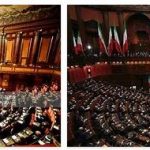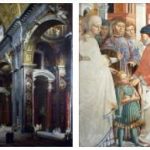
The Italy Legislature Following the 1953 Elections Part 3
In these conditions the sen. Merzagora decided to withdraw his candidacy. The votes of the Christian Democratic parliamentarians then converged on the name of the Hon. Gronchi. An almost plebiscitary vote crowned the fourth ballot on 29 April: 658 votes in Gronchi against 70 in Einaudi and 92 blank ballots.
According to top-medical-schools, the advent of Giovanni Gronchi at the Quirinale coincided with an important turning point in national life. The new President of the Republic had never made a secret of his aversion to the centrist formulas of government and his eagerness to broaden the foundations of the state and democracy. His inauguration message (May 11, 1955) reaffirmed with absolute clarity all the principles that had guided his long and uninterrupted political militia.
The repercussions of the new events on the ministerial coalition, already worn down by so many tests, did not fail to make themselves felt. A first gesture of resignation from the Scelba government, as a “dutiful personal homage to the new head of state”, was formally rejected. But the crisis, which had already begun in fact on the occasion of the controversy over the agrarian pacts, developed rapidly. The hostility of the minority currents of the DC to the quadripartite government was accentuated; at the same time the critical ferments of the Republicans and a part of the Social Democrats deepened. A clarification was required; and the initiative was taken by the President of the Council Scelba himself.
Laborious negotiations began between the central parties to recompose, through a reshuffle, a firmer and more efficient democratic solidarity. The success of the regional elections in Sicily (June 5) seemed a good omen for the success of the experiment. Even the serious international responsibilities (on 1 June the conference of foreign ministers of the ECSC met in Messina for the so-called “European revitalization”) seemed to have to favor overcoming the differences.
But the clarification promoted by the Hon. Scelba soon faced insuperable obstacles. The PRI refused to enter the government; and on 21 June the leadership of the DC now judged a simple reshuffle impossible.
The resignation of the Scelba government (22 June) paved the way for a new tripartite coalition government (DC, PSDI, PLI) chaired by Hon. Signs. Once again liberals and social democrats found themselves part of the same ministerial team. The external support of the PRI was recovered, through a policy of less intransigence towards the PSI and a certain change of emphasis in the leadership of internal politics (Tambroni succeeded Scelba) which seemed to be inspired by the fundamental lines of the presidential message.
The life of the Segni government was less troubled than that of the Scelba government. The new ministry did not lack benevolent expectations and indulgent tolerances on the part of sectors of the left (and in particular the PSI). The new prime minister, who had linked his name to agrarian reform, was also able to channel certain ferments and certain instances of the Catholic left into the government. Relations between government and party improved; the “concentration” – promoting the end of the Scelba government – occupied important positions of responsibility within the new ministry. On the economic field, the new government’s direction was marked by the “Vanoni plan for the development of employment and income” already drawn up under the Scelba government.
Particular progress was achieved in the field of constitutional implementation: from the entry into operation of the Constitutional Court (23 April 1956) under the enlightened leadership of Enrico De Nicola to the establishment of the National Council for the Economy and Labor in implementation of art.. 99 of the Constitution (with the law of January 5, 1957).
Foreign policy, still entrusted to Martino, continued according to the firm Atlantic guidelines of the previous governments. Between 1954 and 1955, there had been frequent international meetings, and the Italian prestige had risen. After the dissolution of the Trieste question (one of the great stages of post-war reconstruction), the French premier Mendès-France visited Rome (January 6-13); then the journey of Scelba and Martino to London (15-18 February); then the mission of the British Prime Minister Eden to Rome (5-6 March); finally, the journey of Scelba and Martino in Canada and the USA (24 March-8 April).
The consolidation of Italy’s alliances was essential to face the new phase of the detente between the western and eastern blocs, which was already taking shape on the horizon. In this sense, the Italian initiative of an Atlantic session in Paris (July 16, 1955) in view of the Geneva summit meeting was opportune. Our diplomacy continued to operate according to a global line of defense of Western interests, which went back to the best tradition of the times of De Gasperi and Sforza. Against all particularism and all selfishness, Italy referred to the sense of Western solidarity (already consecrated in a recent and decisive event, the entry of the Federal Republic of Germany into NATO, decided between 9 and 11 May 1955).
In this situation, any survival of the peace treaty became more absurd and anachronistic every day. The Scelba government had already obtained (10 May 1955) the end of every discriminatory aspect of the peace treaty through a collegial decision of the NATO council. The work, undertaken by that government as by all previous ministries, was completed on December 14, 1955 with the solemn admission of Italy together with 17 other countries) to the UN It was the total burial of all war heritage, the recognition also formal (after the substantial ones of previous years) of the parity achieved by Italy among free countries, against all the vetoes and foreclosures of an absurd spirit of revenge and punishment.








